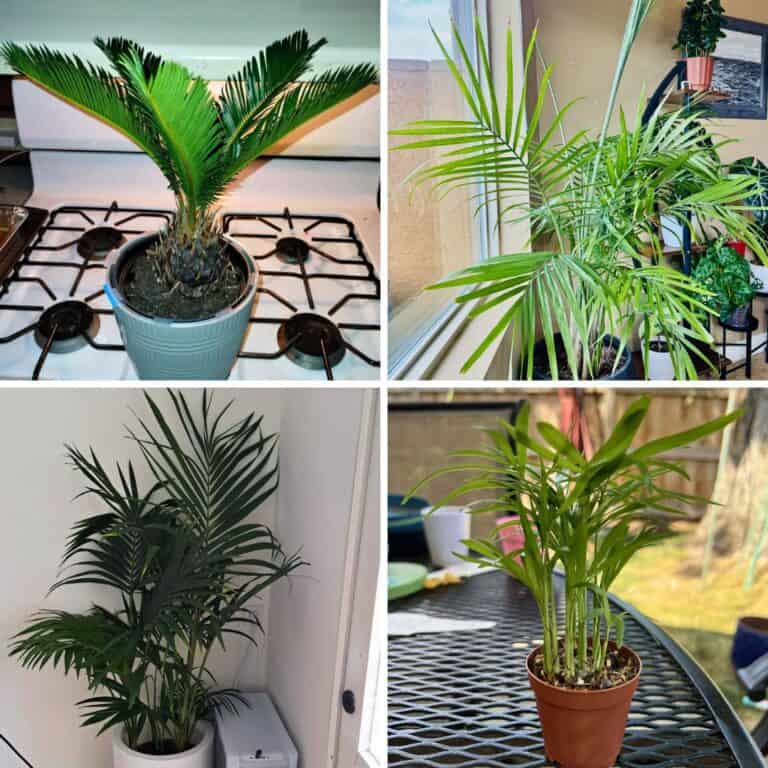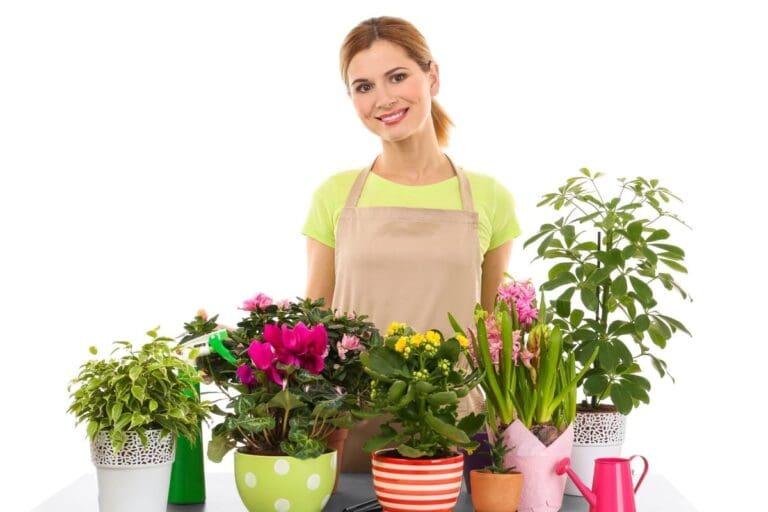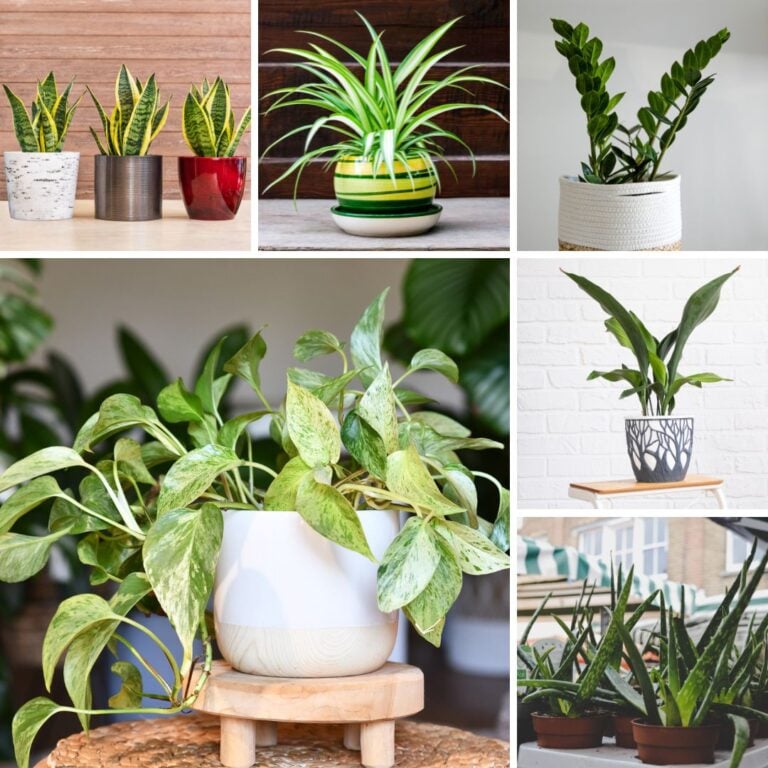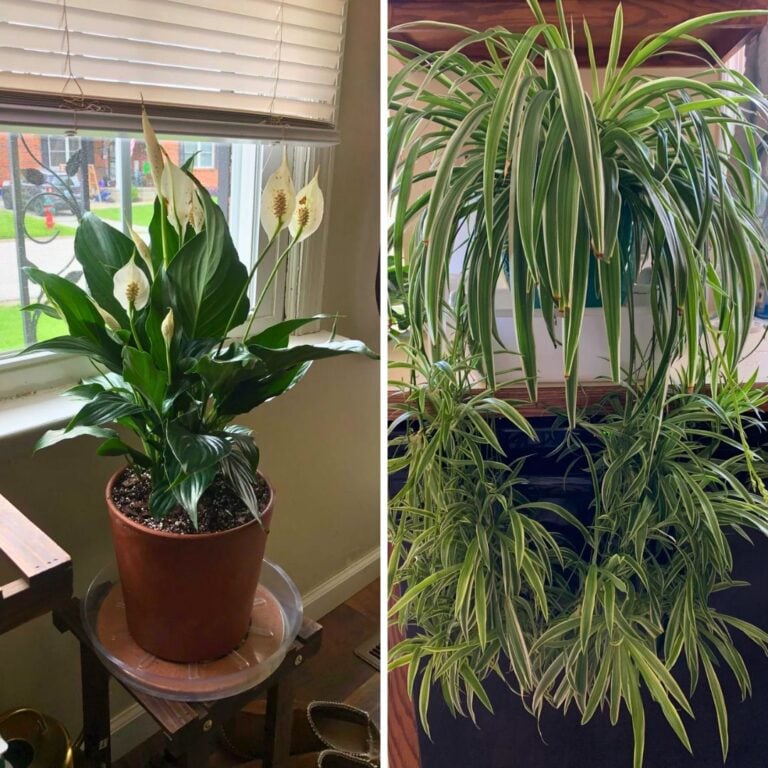10 Houseplants That Thrive Indoors During Winter
I always want my home to feel alive in winter, and houseplants really help with that. Even when the days are short and the air is dry, some plants just keep going strong inside.
You can enjoy greenery all winter long by choosing plants that naturally handle low light and cooler conditions. Not every plant loves winter, but a few seem almost made for it.
In this article, I’ll share a mix of indoor plants that keep growing even when it’s cold outside. I’ll also throw in some simple care tips, common issues, and easy fixes to keep your plants happy.
Please note: Simplify Plants is reader-supported. As an Amazon Associate, I earn from qualifying purchases made by our readers with no extra cost added to you all! Some links in the post are affiliate links and I get a commission from purchases made through links in the post.
1) Snake Plant

I’ve got a soft spot for the Snake Plant in winter. It’s just so easy to care for, honestly.
It doesn’t need much light, so I can just stick it in a corner or by a window and not worry. This plant tolerates low humidity and cooler indoor temperatures better than most.
I only water my Snake Plant when the soil feels dry. Overwatering can harm it, so I make sure the pot drains well.
The tall, upright leaves really pop, especially when other plants start to fade in winter. Those variegated patterns on the leaves? They catch my eye every time.
It grows so slowly that I never feel rushed to repot. Seriously, it’s probably the most low-maintenance plant I have.
2) ZZ Plant
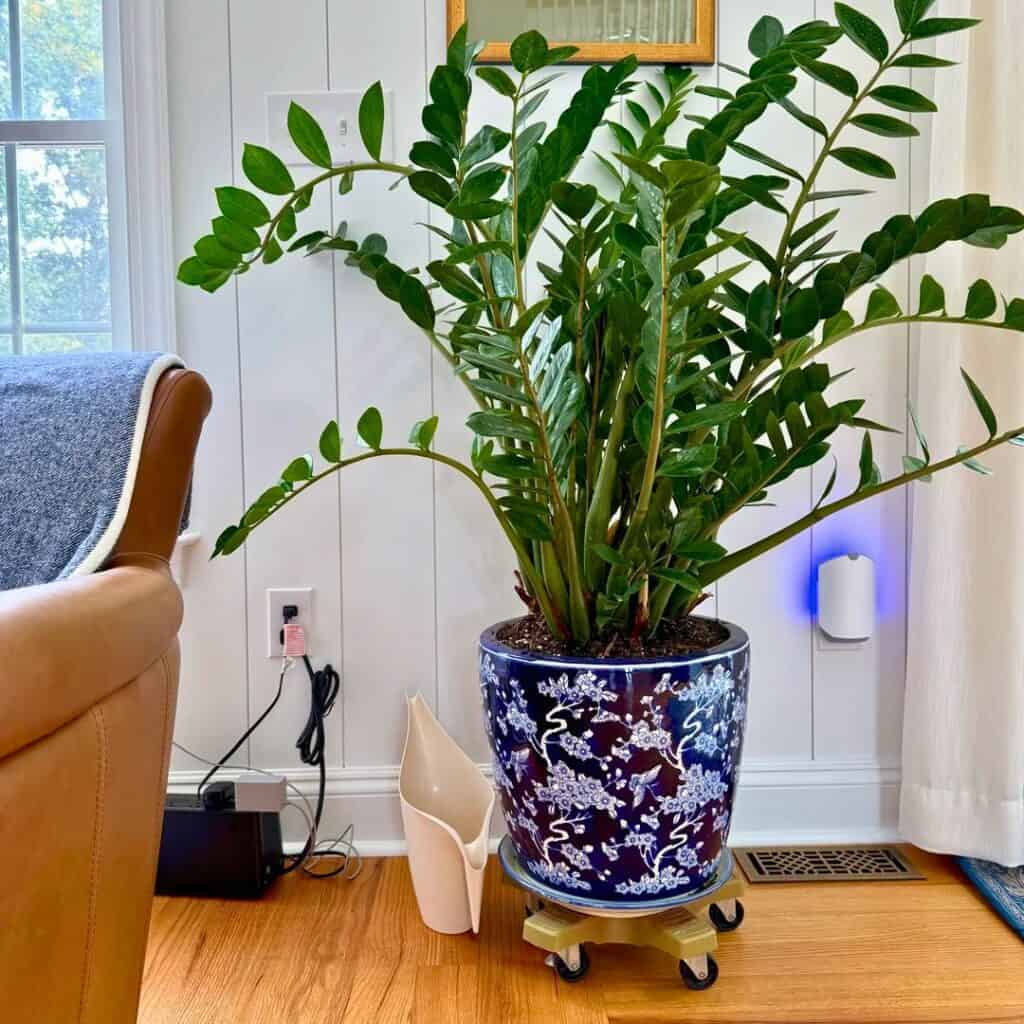
The ZZ Plant is a winter favorite for me. Even when it’s cold, those thick, waxy leaves stay shiny and green.
I only water it when the soil is totally dry, and it doesn’t seem to mind. It’s honestly one of the most low-maintenance plants I own.
The ZZ Plant is fine with low light. I’ve got mine in the corner of my living room, and it still looks great.
It can handle dry indoor air too, which is a lifesaver when the heater’s running. The roots store water, so it doesn’t dry out quickly.
If you want something easy that still looks good all winter, the ZZ Plant is a solid pick. It just fits anywhere.
3) Spider Plant

The Spider Plant is basically foolproof, especially in winter. It doesn’t ask for much and still looks lively.
It prefers bright, indirect light, but will tolerate lower light if that’s all you’ve got. I keep mine near a window with filtered sun.
I let the soil dry a bit before watering again. Overwatering? Not a good idea, so I always check first.
Those long green and white striped leaves add a splash of color, which I really appreciate when it’s gray outside.
One thing I love—Spider Plants grow small baby plants (“pups”). I snip them off and root them in water or soil for new plants.
It’s a tough little plant that handles different indoor conditions, so I don’t stress about it in winter.
4) Pothos

A Pothos is a must-have for me in winter. It’s just so easy to care for, and it thrives even when the days are short.
I water only when the soil dries out a bit. Overwatering can harm the roots, so I always check first.
The trailing vines add a lively touch to any room. Sometimes I put mine on a shelf so the leaves can spill over the sides.
Pothos can handle a range of temperatures, as long as it’s above 60°F. That’s pretty forgiving when it’s chilly outside.
If the leaves get dusty, I just wipe them with a damp cloth. Clean leaves help the plant soak up more light, which is extra important in winter.
It’s also super easy to propagate new plants. Snip a stem, pop it in water, and roots show up in a few weeks.
Honestly, it’s a great starter plant. Doesn’t need much fuss but still gives you that fresh green vibe.
5) Peace Lily
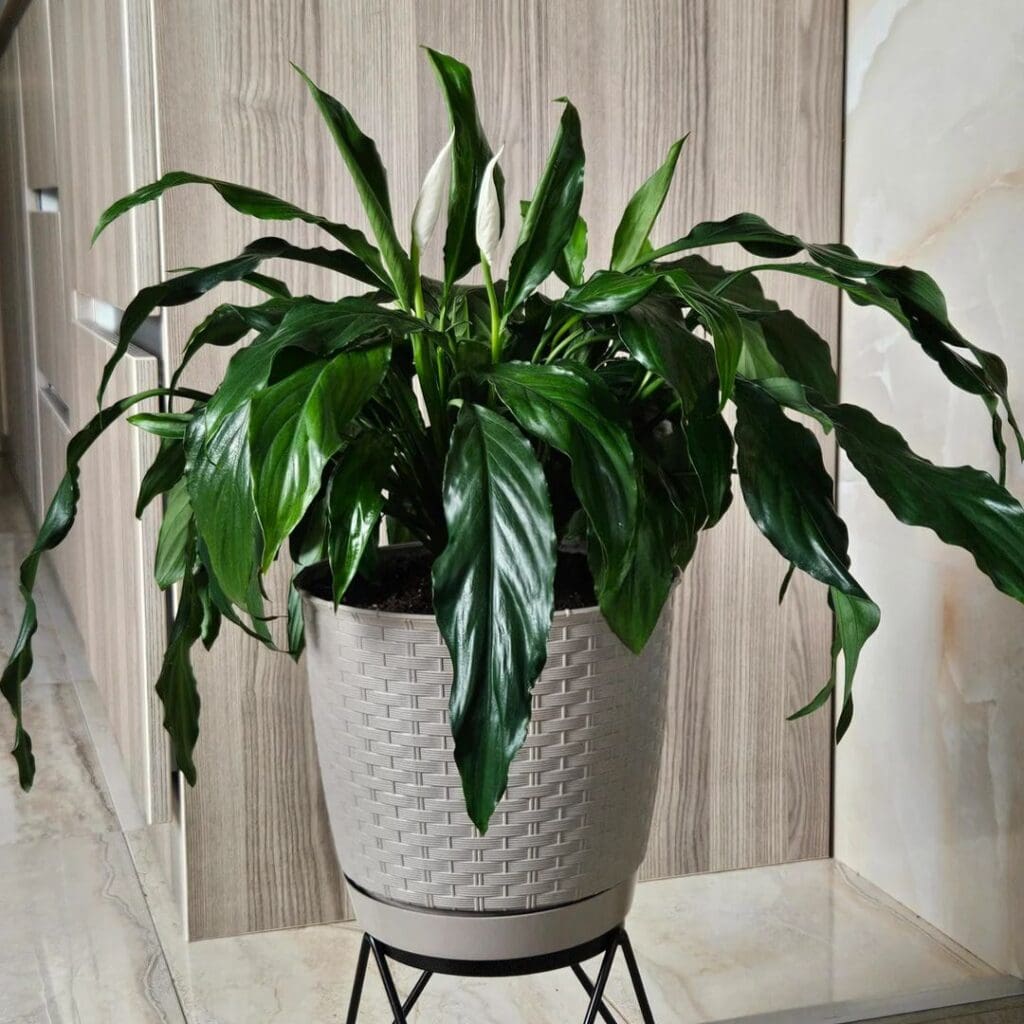
The Peace Lily is a winter staple for me. Its deep green leaves make any room feel a bit brighter, even on the darkest days.
It does well in low light, so I don’t have to crowd it by a sunny window. Indirect light works just fine.
I water when the top of the soil feels dry. It likes slightly moist soil, but I avoid letting it sit in water.
The Peace Lily actually helps the air feel cleaner. I notice the room seems fresher when it’s around.
Sometimes it even blooms with simple white flowers in winter. The blooms add a soft, peaceful touch.
It’s easy to care for, which is a relief when everything else feels demanding. It doesn’t need much attention, just steady care.
6) Chinese Evergreen

Chinese Evergreen plants are kind of underrated, in my opinion. They stay green even in the colder months, and they’re not picky about light.
I usually tuck mine in a corner with indirect light, and it keeps growing. It’s honestly one of the easiest plants I’ve had.
I let the top inch of soil dry before watering again. Overwatering can cause root problems, so I always check the soil.
The leaves are what I enjoy most. Greens, silvers, sometimes even reds—there’s always a little color, even when it’s bleak outside.
This plant handles dry indoor air better than most, which is a win in winter.
If you want a plant that just keeps looking good with minimal effort, Chinese Evergreen is a solid choice.
7) Cast Iron Plant
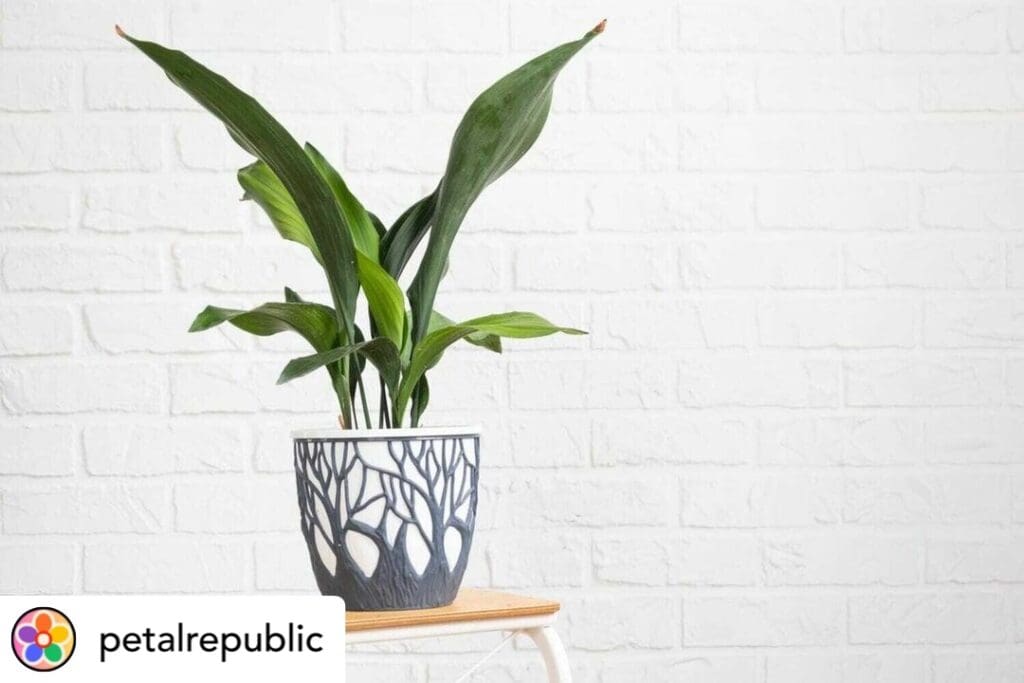
The Cast Iron Plant is as tough as its name suggests. Low light, uneven watering, cooler air—it handles it all.
Its dark green leaves grow upright and give a clean, simple look. I can put it in corners where other plants might struggle.
I let the soil dry a bit before watering. It’s pretty forgiving, so I don’t worry if I forget now and then.
It grows slowly, meaning I rarely have to repot. I like that it stays neat and doesn’t take over.
I keep it out of direct sun since too much light can burn the leaves. Low to medium light is just right for winter.
This plant doesn’t need much. It just sits there, looking good, even if I’m not paying much attention.
8) Philodendron

A Philodendron is one of my go-tos for winter. It’s so easy to care for, and I don’t have to fuss over it.
The leaves stay green even when it’s freezing outside. I find it grows best in bright, indirect light, but I keep it away from direct sun to avoid crispy leaves.
I water only when the top inch of soil feels dry. Too much water is a no-go, so checking the soil is my routine.
Philodendrons adapt to different rooms, which I appreciate. Mine has done well in both the living room and bedroom, as long as it’s above 55°F.
The heart-shaped leaves always make the space feel a little more cheerful.
If I want it to grow fuller, I pinch the tips of new stems. It helps it branch out and look more balanced.
Philodendrons are low-maintenance and reliable, so I’m always quick to recommend them for winter indoor plants.
9) Dracaena

Dracaena is a plant I keep around for its bold, upright leaves. They can be plain green or striped, and they really brighten up a room.
I put my Dracaena in indirect light—direct sun just burns the leaves. It’s easy to find a good spot for it.
Watering is straightforward. I let the top inch of soil dry before watering again, and I’m careful not to overdo it.
It’s fine with lower humidity, which I appreciate in winter. I don’t mist it much, unless the air feels extra dry.
Dracaena grows slowly, so I don’t have to repot often. When it does get bigger, I just move it to a slightly larger pot with fresh soil.
Every few weeks, I wipe down the leaves with a damp cloth to get rid of dust. It helps the plant soak up more light.
If the tips of the leaves turn brown, I check my watering or switch to filtered water. That usually solves the problem.
Dracaena gives a lot of style without much work. It’s a steady green presence in my home, even when everything else seems to slow down.
10) Parlor Palm

Honestly, I love having a Parlor Palm around in winter. It doesn’t care if the light’s not great, which is perfect for that shady corner in my living room.
It grows pretty slowly, so it won’t suddenly take over. Those soft, green fronds just make the whole space feel a little calmer, a bit more alive.
I only water it when the top inch of soil dries out—nothing fancy there. Overwatering’s a real issue, so I always make sure the pot drains well.
The Parlor Palm likes average indoor temperatures, so I don’t have to fuss with the thermostat. Just keep it away from cold drafts or blasting heat vents.
I’ve noticed it barely needs fertilizer. A light feeding every few months seems to do the trick.
Honestly, the best part is how low-maintenance it is. I can leave it be for a while and still have some greenery to look at.
If you want an easy plant that looks good year-round, I’d say the Parlor Palm is a safe bet.
Essential Care Tips for Winter Houseplants
In winter, I pay extra attention to three things: watering, light, and humidity. Even tiny changes here can make a big difference when the days get short and the air gets dry.
Adjusting Watering Schedules
I cut back on watering during winter because the soil dries out much slower. Most houseplants just aren’t growing as fast, so they don’t need as much water.
Root rot is a real risk if you overdo it in winter. I always check the soil with my finger—about an inch deep.
If it’s dry, I’ll water lightly. If it’s damp, I just wait a bit longer.
I stick to pots with drainage holes so water doesn’t collect at the bottom. For moisture-loving plants like ferns, I’ll water a bit more often, but never soak the soil.
Maximizing Indoor Light
Winter sunlight is pretty scarce, so I move my plants closer to windows that get the most sun. South- and east-facing windows usually work best for me.
I wipe the leaves to keep dust off—makes a surprising difference for light absorption. If sunlight’s not cutting it, I’ll pull out the grow lights and keep them on for about 10–12 hours.
Some plants, like succulents or herbs, really need that extra boost. I try to rotate my pots every week so all sides get some light.
This helps keep them from leaning and looking lopsided.
Maintaining Humidity Levels
With the heat on, the air inside gets super dry, and plants aren’t thrilled about it. I aim for about 40–50% humidity to avoid crispy or curling leaves.
Grouping plants together is my go-to trick—they help each other keep the air moist. I’ll also run a humidifier in the room, which works way better than misting.
For smaller plants, a pebble tray does the job. I just set a dish of water with pebbles under the pot so the water evaporates and bumps up the humidity around the plant.
Common Challenges and Solutions
In winter, I see two main issues: sneaky pests and leaves dropping. Both can make plants look rough, but you can usually fix things with a few tweaks.
Preventing Pest Infestations
I’ve noticed pests like spider mites, fungus gnats, and aphids show up more in winter. Dry air and weak plants just make it easier for them to move in.
I check under the leaves often—that’s where they like to hide. Catching them early makes all the difference.
Here’s what I do:
- Wipe leaves with a damp cloth
- Use insecticidal soap or neem oil if things get bad
- Avoid overwatering, since gnats love soggy soil
A small fan helps keep air moving, which pests hate. Staying on top of these little things really helps.
Dealing With Leaf Drop
When leaves start falling, it’s usually because of low light, dry air, or sudden temperature changes. Some leaf drop is normal, but if it’s too much, I know something’s off.
I move plants closer to windows or use a grow light if needed. Heaters and drafts are a no-go, so I keep plants away from them.
For dry air, I’ll run a humidifier or set a tray of water nearby. Grouping plants is another easy fix.
If I see yellowing leaves, I double-check my watering routine. Both over- and under-watering can stress plants out. Small changes here usually get things back on track.
Frequently Asked Questions
Honestly, winter plant care comes down to light, water, humidity, and pest control. Some plants don’t mind low light, but others need a little help from grow lights or extra moisture.
What are some low-light indoor plants that can survive the colder months?
I keep Snake Plant, ZZ Plant, and Pothos in spots that barely see the sun, and they’re still thriving. These are my go-tos for dim corners.
How often should I water my indoor plants in the winter?
I water less in winter since everything grows slower. I just check the soil—if it’s dry about an inch down, it’s time to water.
Are there any houseplants that can improve air quality during winter?
Spider Plant and Peace Lily are my favorites for this. They’re easy to care for and help freshen up the air when the windows are closed.
What is the best way to maintain humidity for indoor plants when the heat is on?
I swear by my humidifier. Grouping plants together helps too—they seem to keep each other happy.
Can I use artificial light to help my houseplants grow in winter?
Absolutely, I use grow lights when sunlight just isn’t enough. Ten to twelve hours a day seems to keep my plants satisfied.
How do I protect my indoor plants from pests during the winter?
I usually keep an eye on the leaves—sometimes you’ll spot tiny bugs or weird sticky patches. If I notice anything off, I’ll gently wipe the leaves with a damp cloth.
Sometimes, I’ll reach for a mild insecticidal soap if things look a bit more serious. It’s not a perfect system, but it helps keep most pests in check.
Recommended Garden Supplies
| Product Image | Our Recommended Gardening Supplies | Check Offers! |
|---|---|---|
Top Top
Top
Top
Top
Top
Top
Top
Top | rePotme Houseplant and Tropical Classic Potting Soil Mix | Check Offer On Amazon |
 Top
Top
Top
Top
Top
Top
Top
Top | Espoma Organic Indoor Plant Food | Check Offer On Amazon |
 Top
Top
Top
Top
Top
Top
Top
Top | GooingTop LED Grow Light 6000K Full Spectrum Clip Plant Growing Lamp | Check Offer On Amazon |
 Top
Top
Top
Top
Top
Top
Top
Top | Soil Moisture Meter | Check Offer On Amazon |
 Top
Top
Top
Top
Top
Top
Top
Top | Govee Hygrometer Thermometer, Bluetooth Enabled! | Check Offer On Amazon |
 Top
Top | LEVOIT Humidifiers for Large Room(Best For Plants) | Check Offer On Amazon |
 Top
Top
Top
Top
Top
Top
Top
Top | Upgraded DIY Automatic Drip Irrigation Kit, 15 Potted Houseplants Support | Check Offer On Amazon |
 Top
Top
Top
Top
Top
Top
Top
Top | Stainless Steel Heavy Duty Gardening Tool Set | Check Offer On Amazon |
 Top
Top
Top
Top
Top
Top
Top
Top | Bonide Insecticidal Soap | Check Offer On Amazon |
 Top
Top
Top
Top
Top
Top
Top
Top | Bonide 32 oz Spray Neem Oil for Organic Gardening | Check Offer On Amazon |
 Top
Top
Top
Top
Top
Top
Top
Top | Garden Safe Fungicide | Check Offer On Amazon |

